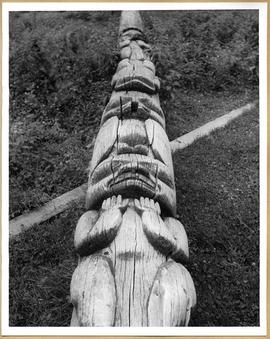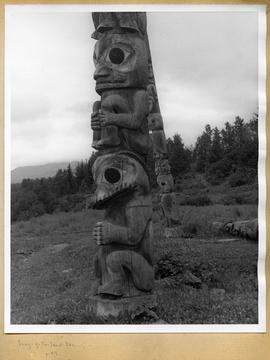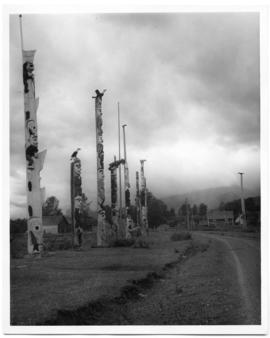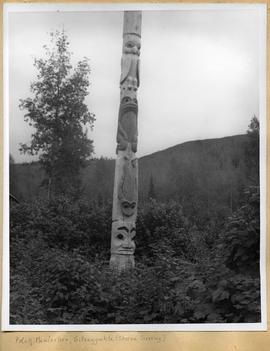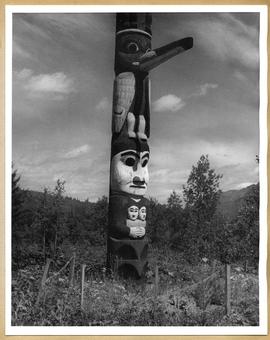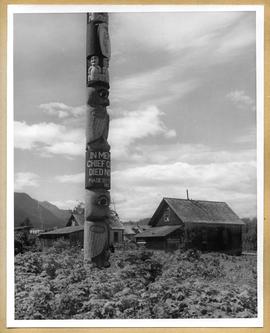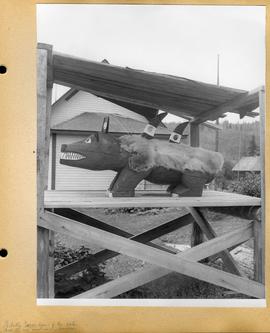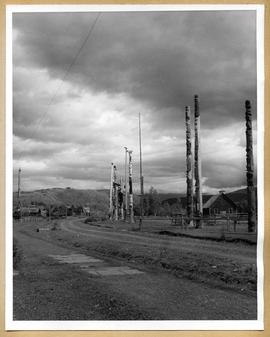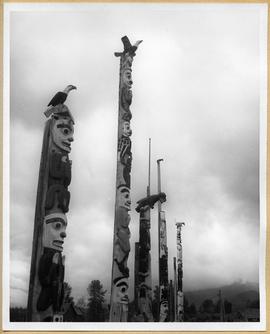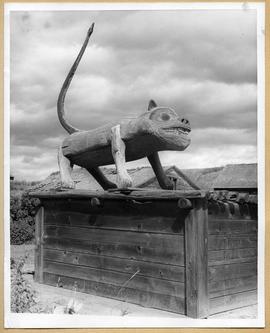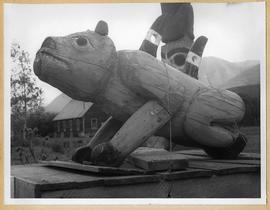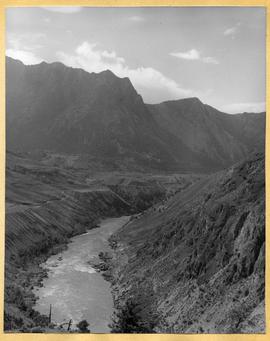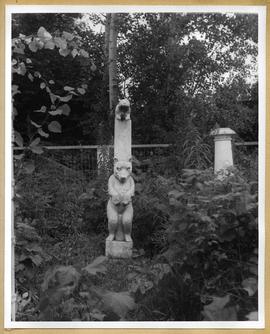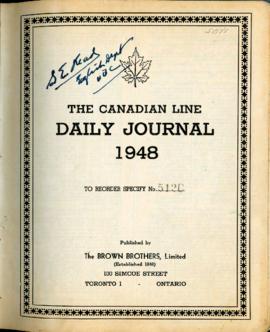The fonds reflects Minn Sjolseth's artistic career and travels to First Nations communities throughout British Columbia and Alaska with her husband Anthony Carter. Contents of the fonds depict First Nations cultures in British Columbia between 1960 and 1980, including Haida, Coast Salish, Kwakwaka'wakw, Gitsegukla, Kispiox, and Nisga'a. Several of the contents depict notable figures, including Chief Dan George and August Jacks.
The fonds includes textual records including correspondence, ephemera, newspaper clippings; graphic materials such as photographs, slides, negatives, and transparencies that depict Sjolseth’s travels and artworks; and artworks produced by Sjolseth including paintings, drawings, and prints.
The fonds is organized into the following series:
- Personal records
- Artwork an Exhibition records
- Artworks

